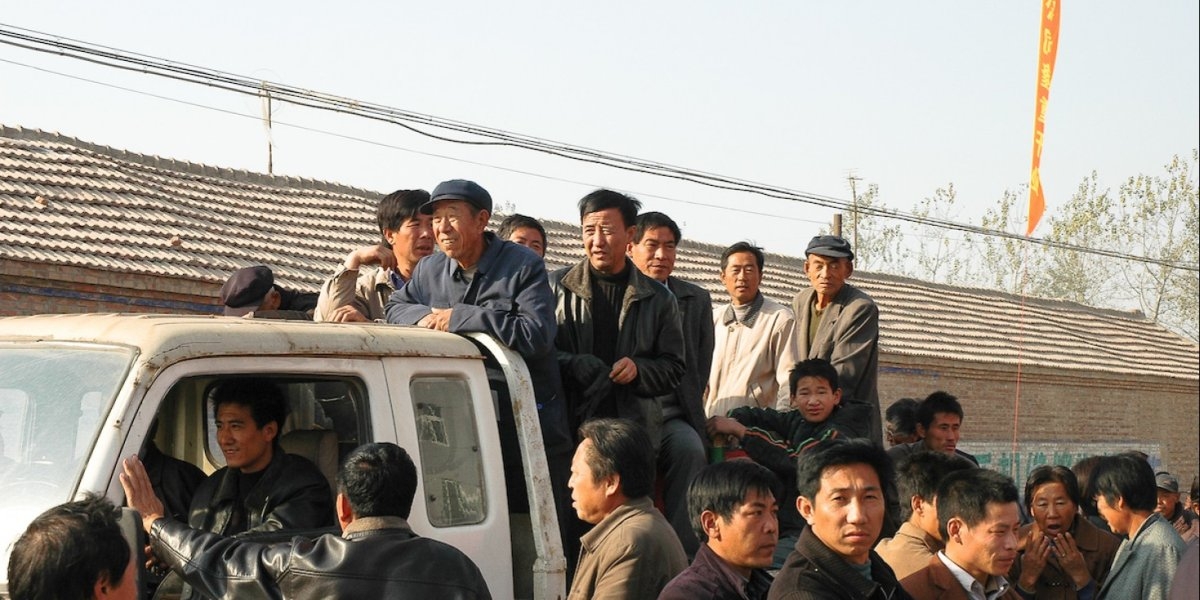ChiNorBC - Chinese-Norwegian Project on Emission, Impact, and Control Policy for Black Carbon and its Co-benefits in Northern China
This project will help enhance the knowledge base for and support the development of a strategy for BC/OC co-control in China.
COMMUTING TO WORK IN NORTHERN CHINA. PHOTO: CHRISTIAN BJØRNÆS/CICERO
Prosjektfakta
Background
To meet the Sustainable Development Goals and the ambitions of the Paris Agreement, deep reductions are needed, not only in emissions of CO2 but also in air pollution. Air pollution is a major environmental problem, negatively affecting air quality, human health, and crops. Many of the main air pollutants also play an important role in shaping the climate, locally and globally. China is currently a major source of air pollutants, but the magnitude of emissions is still highly uncertain, and emissions are now changing rapidly. Through the ChiNorBC project, experts from Norway and China work to improve the knowledge about emissions, climate and health impacts, and to develop policy options for further control of black carbon and other emissions in China.
Along with decades of rapid economic growth in China, the combustion of coal, other fossil fuels, and biofuels has increased considerably, resulting in high air pollution levels. Since the implementation of China’s Action Plan on Air Pollution Prevention and Control (Action Plan) in 2013, emissions of SO2 and NOx in China have declined rapidly. There is now also increasing focus on black and organic carbon particles (BC and OC).
However, there is still a large spread in estimates of the amount of BC/OC emissions and their geographical/spatial distribution in China. This hampers our abilities to quantify the impacts on health and climate, and to design and implement optimal policies for further emission reductions.
Objectives
In ChiNorBC we will:
- Develop an improved emission inventory for BC/OC emissions in China using the most recent, best available national statistics.
- Provide new estimates of effects on climate, air quality, and health.
- Develop scenarios towards 2035 for reducing the emissions and impacts of BC/OC in China.
- Provide policy recommendations on emissions reductions based on updated/new air quality and climate change information.
Output and expected impacts
The project is expected to make a significant contribution that will enhance knowledge base for and support the development of a strategy for BC/OC co-control in China. The project also promotes and strengthens the collaboration between Norway and China on environmental issues, at both academic and policy levels. The project is funded by the Norwegian Ministry of Foreign Affairs through the Norwegian embassy in Beijing and the work on the Norwegian side is coordinated by the Norwegian Environment Agency. Partners on the Norwegians side are CICERO and FHI. Work is coordinated on the Chinese side by Chinese Research Academy of Environmental Sciences (CRAES) with partner Chinese Academy for Environmental Planning (CAEP). CRAES is a government agency under the Ministry of Ecology and Environment (MEE).
| CAEP | Chinese Academy for Environmental Planning, China |
| CICERO | CICERO Center for International Climate Research -Oslo, Norway |
| CRAES | Chinese Research Academy of Environmental Sciences |
| MEE | Ministry of Ecology and Environment of China |
| MFA | Ministry of Foreign Affairs, Norway |
| MOFCOM | Ministry of Commerce of China |
| NIPH | Norwegian Institute on Public Health, Norway |
| NEA | Norwegian Environment Agency, Norway |
The many benefits of cutting air pollution emissions
Air pollution is one of the largest causes of premature deaths worldwide, killing an estimated seven million people each year. The primary contributor is particles suspended in the atmosphere, so called particulate matter (PM). BC, OC, and sulfate particles formed from emissions of sulfur dioxide, are key constituents of PM. Another air pollutant is ozone, which is formed in the atmosphere from chemical reactions involving nitrogen oxides and other hydrocarbons. Both ozone and NOx have harmful effects on human health and on crops and vegetation. Air pollutants also affect climate. Ozone is a greenhouse gas and an increase in the amount contributes to climate warming. Particles have many and complex climate interactions, affecting temperature, clouds and precipitation. Common for the air pollutants is that their effects on climate are much shorter lived than CO2, which continues to affect climate for centuries. This characteristic has coined the collective term of short-lived climate forcers (SLCFs). Reducing SLCFs can contribute to slowing the rate of warming and reducing near- term temperature increase, with significant co-benefits for air quality and the environment.
Relevant CICERO publications for further reading about SLCFs and Asia:
Lund, M. T., Aamaas, B., Stjern, C. W., Klimont, Z., Berntsen, T. K., and Samset, B. H.: A continued role of short-lived climate forcers under the Shared Socioeconomic Pathways, Earth Syst. Dynam., 11, 977–993, https://doi.org/10.5194/esd-11-977-2020, 2020.
Samset, B.H., Lund, M.T., Bollasina, M. et al. Emerging Asian aerosol patterns. Nat. Geosci. 12, 582–584 (2019). https://doi.org/10.1038/s41561-019-0424-5
Wilcox, L. J., Liu, Z., Samset, B. H., Hawkins, E., Lund, M. T., Nordling, K., Undorf, S., Bollasina, M., Ekman, A. M. L., Krishnan, S., Merikanto, J., and Turner, A. G.: Accelerated increases in global and Asian summer monsoon precipitation from future aerosol reductions, Atmos. Chem. Phys., 20, 11955–11977, https://doi.org/10.5194/acp-20-11955-2020, 2020.
